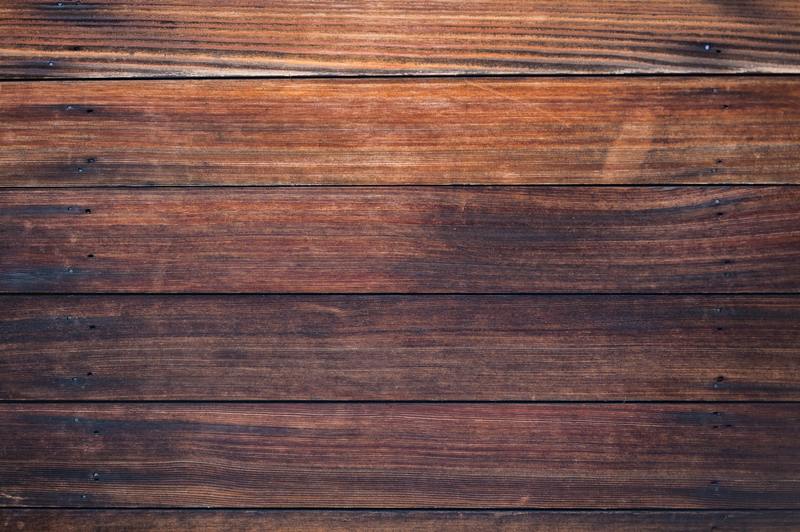Water can ruin your wooden finish if left alone, and to take care of the lingering damage, you must know our steps on how to fix water damaged wood finish. Wood finish may come as paint, lacquer, varnish, and many others, but it can all end up suffering from water damage.
Water destroying your wood finish is something that you don’t want to experience. Seeing a smooth and shiny surface in your furniture is pleasant to see, and you desire to preserve it for as long as you can. However, there are times where it doesn’t meet your eye for a while, and you’ll never know when water has already damaged it.

When this happens, you must start to think about saving your wooden furniture from its demise. Knowing a few repair skills and tricks can help you in your predicament, so we have provided you with six steps to fix water damaged wood finish on your own.
Steps On Fixing The Wood Finish
Water damage on wood furniture and walls can be terrifying, and the same is true with the wood finish. In this tutorial, we have provided the steps on how to fix water damaged wood finish on your own.
Step #1. Drying
Before you start doing your repair, it’s better to dry the surface of the water damaged wood finish. You can dry the wood surface with a cloth or under the sun. If sun drying isn’t available now, it’s better to place it in a room with good ventilation and do air drying.
Step #2. Assessment
After drying the wood surface thoroughly, you must now examine and assess the wood itself. Check if there are other parts that the water has damaged aside from the wood finish. Look for signs of water damage like molds or mildew and stains.
Assessing the depth of the damage and how wide it is will help you fully complete your repair. It will also help you avoid doing the same repair again because of some unchecked areas.
Step #3. Sand
Now that you have done your assessment of damage, you can now start to tear off the damaged finish. You can tear the water damaged finish by sanding it. Start from a rougher grit to a smoother one as you progress.
Sanding will also remove impurities and rough surfaces in the wood, and it can also help you on the later part of the repair. Do the sanding until the surface is ready for restoration. After sanding, wipe the dust particles and other debris away and proceed onto the following procedure.
Step #4. Apply furniture oil
After finishing the sanding process, it’s time to apply some furniture oil. The application of the furniture oil will help you restore the former color and shine of your wood. This process is skipped mainly by others, but this will significantly improve your repair by a significant margin.
Apply the oil using a cloth or rag and wipe it down on the wood’s surface. Air-dry the freshly oiled surface and wait for it to dry before proceeding.
Step #5. Apply moisturizer
To help prevent the same water damage from happening again, it is better to waterproof the finish and the woof. Apply a wood moisturizer to the wood’s surface. The wood moisturizer will help lock the color of the wood and help prevent water from seeping in.
Wipe the moisturizer all over the wood’s surface. Do not leave any spots behind. After doing so, wait for it to completely dry.
Step #6. Finish
Now comes the last part of the repair, which is to apply a new finish for your wood surface. Apply your choice of wood finish, may it be a lacquer, paint, or wood polish. When using, strictly follow the instructions provided along the product to ensure a perfect finish.
How much does it cost to repair wood finish?
The cost of repair for a water damaged wood finish will ultimately depend on the scale of damage. Wood finishes are relatively cheaper compared to repairs on the wood itself. In some unfortunate cases, you may have to deal with both.
There are additional costs to also consider when choosing the type of finish you’re dealing with. The fancier the kind of finish you want to replace during your repair procedure, the more costly it will be.
There’s also the matter of hiring a professional to do work for you if you don’t know what to do. That’s why knowing how to do the repair and select appropriate materials on your own can save you significant amounts of money.
Conclusion
Fishing water damaged wood finish can be made easy if you know the steps on how to fix water damaged wood finish.
Wood is more susceptible to water damage as it absorbs water than other types of materials. Wood finish basically is the first to be in contact with a potential source of water damage. Therefore, they become victims to water damage quickly.
Knowing what you need to do when this happens is beneficial and will save you a lot of time and effort, and money. Repairing and preventing the same problem from occurring again is something you, as a homeowner, should do.
